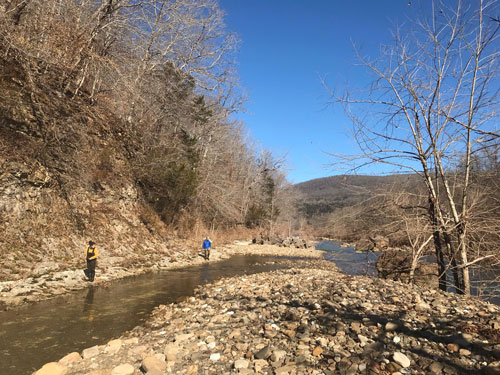April 9, 2021
Abigail Langston receives NSF — Geomorphology and Land-use Dynamics Program award

Abigail Langston, assistant professor of geography and geospatial sciences, has been awarded a $412,000 grant by the National Science Foundation — Geomorphology and Land-use Dynamics Program titled "Collaborative Research: Beyond lithologic control of bedrock valley width: Investigating the role of persistent valley cover in bedrock valley width development."
Langston is a fluvial geomorphologist, meaning she studies how rivers shape the surface of the earth. Her area of specialization is lateral bedrock erosion and how rivers create wide bedrock valleys.
Rivers shape landscapes by incising deep canyons and carving both wide and narrow valleys, determining where people live and where floodwaters go. Little is known about how, when, and why rivers carve wide vs. narrow valleys as they flow through landscapes where they can "touch" the adjoining valley walls.
In this project, Langston and her graduate students Olivia Groeber and Clay Robertson will investigate controls on the development bedrock valleys on America's first National River, the Buffalo in northwest Arkansas. Jill Marshall, assistant professor in the Department of Geosciences at the University of Arkansas, also is a co-principal investigator on the project. This research represents an important step in advancing understanding of how rivers and their valleys respond and evolve.
Langston will also engage with a diverse population of teachers, K-12 students, and Girl Scouts in Kansas and Arkansas and develop an interactive mapping tool that highlights the intersection of places — the Buffalo River, and faces — the diverse peoples living in the Buffalo watershed over the past several millennia.
To learn more about the Department of Geography and Geospatial Sciences, visit their website.
